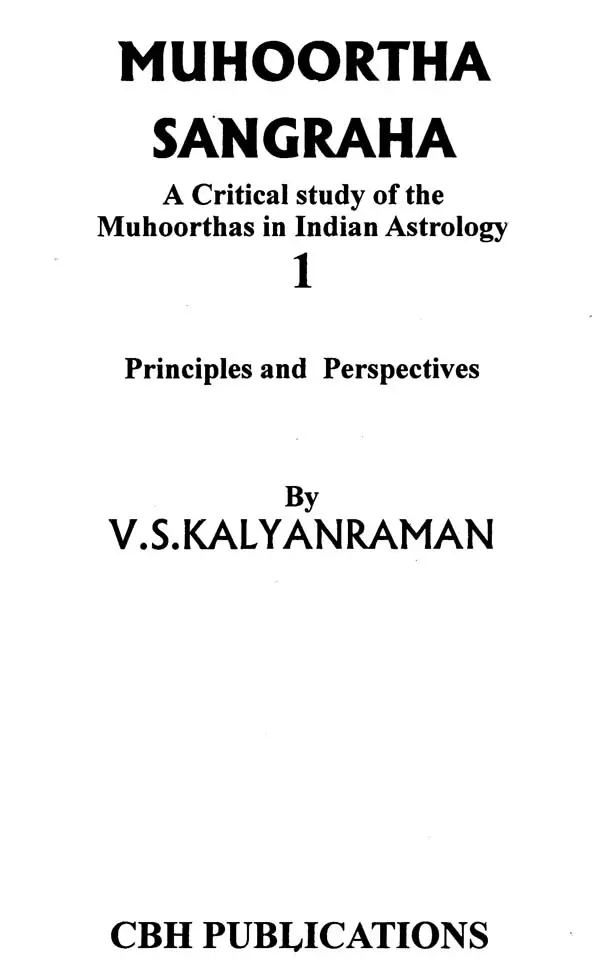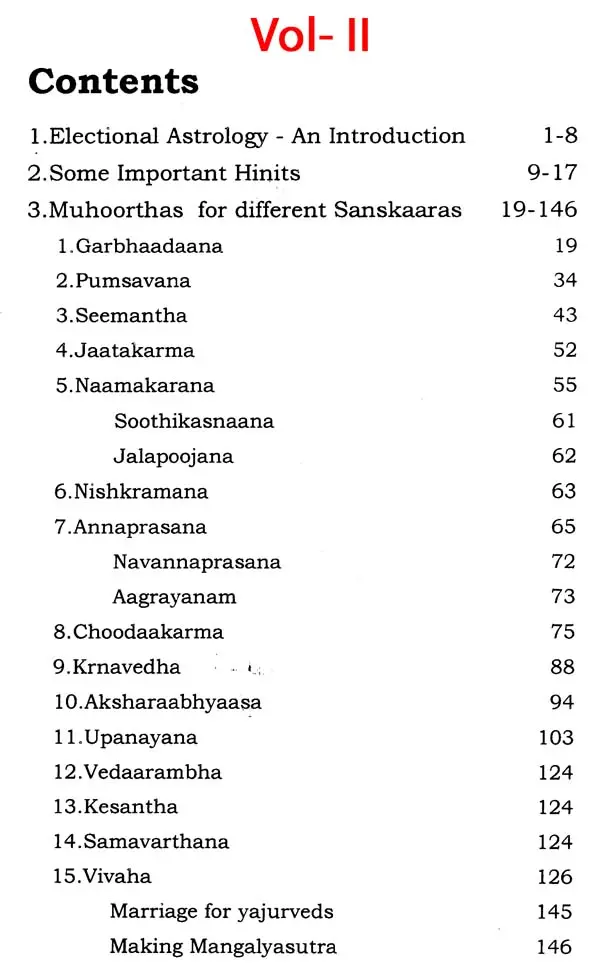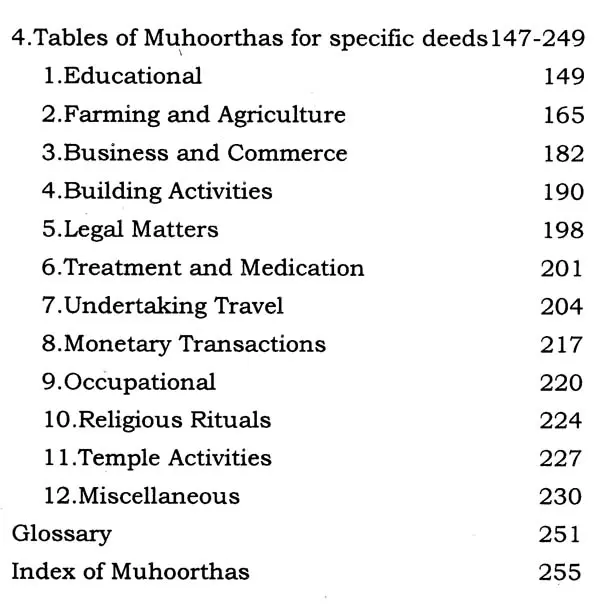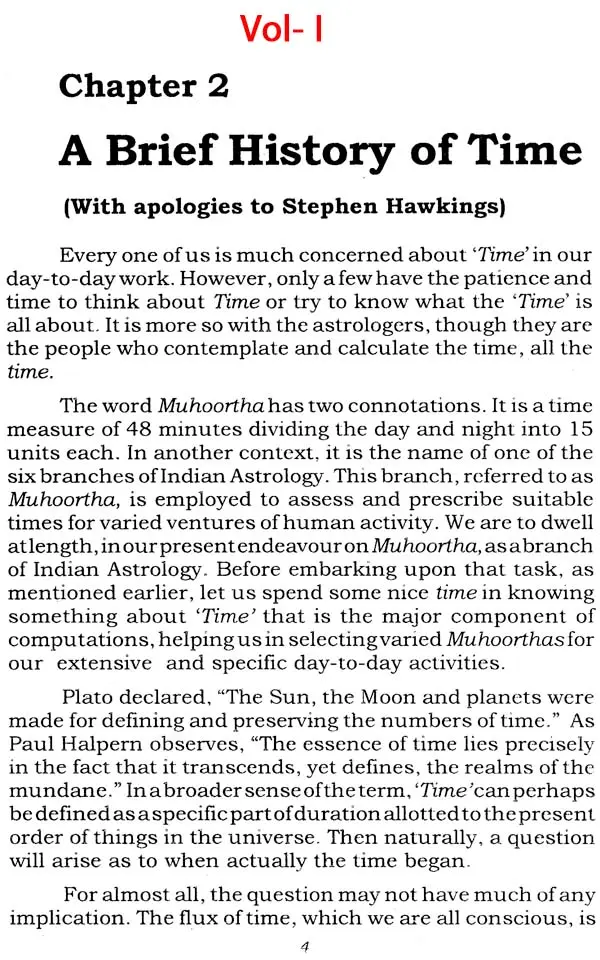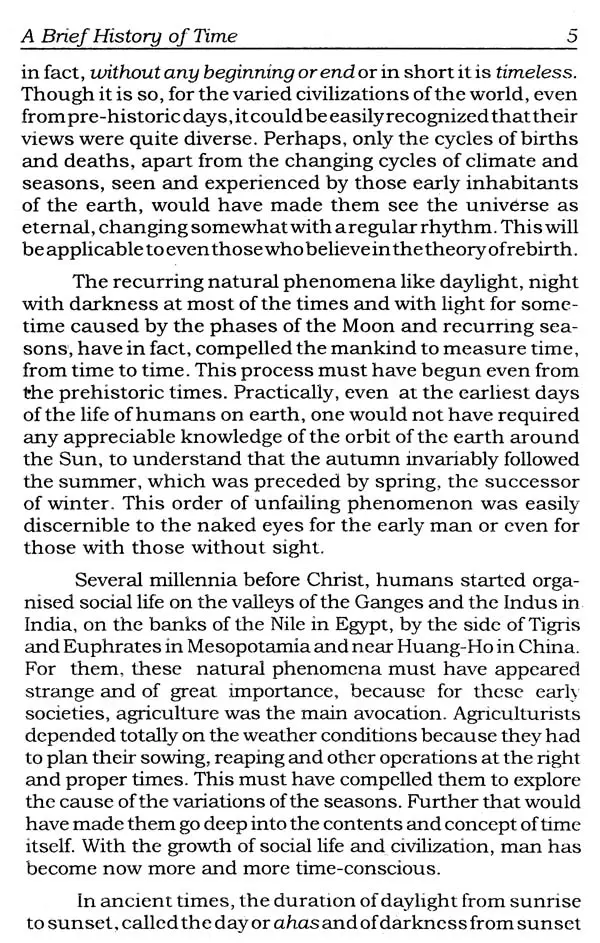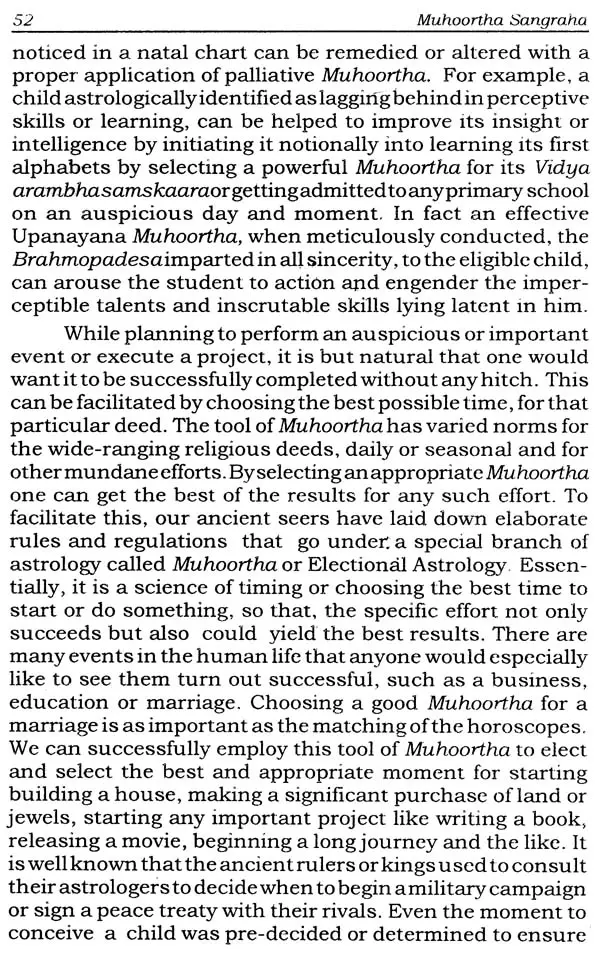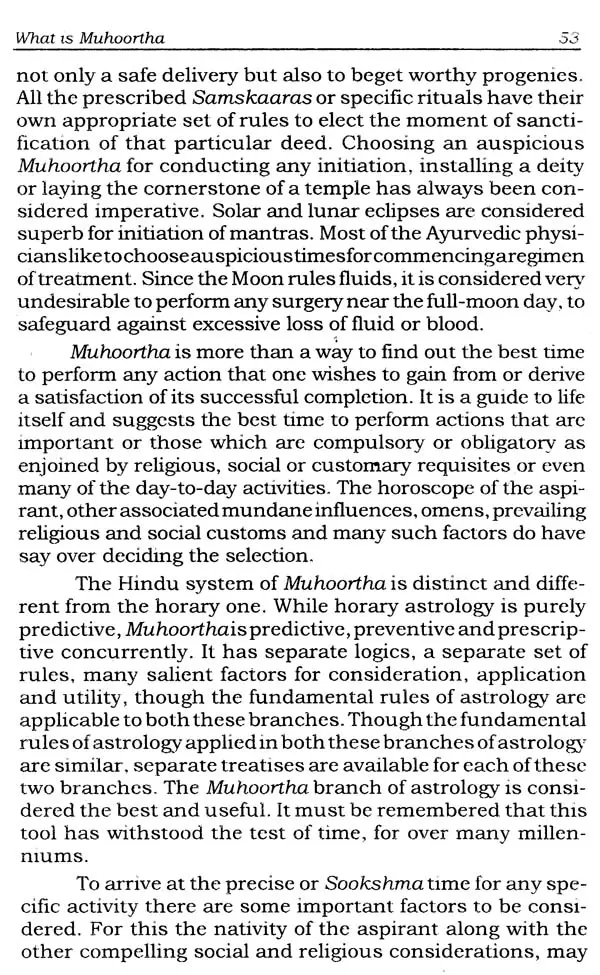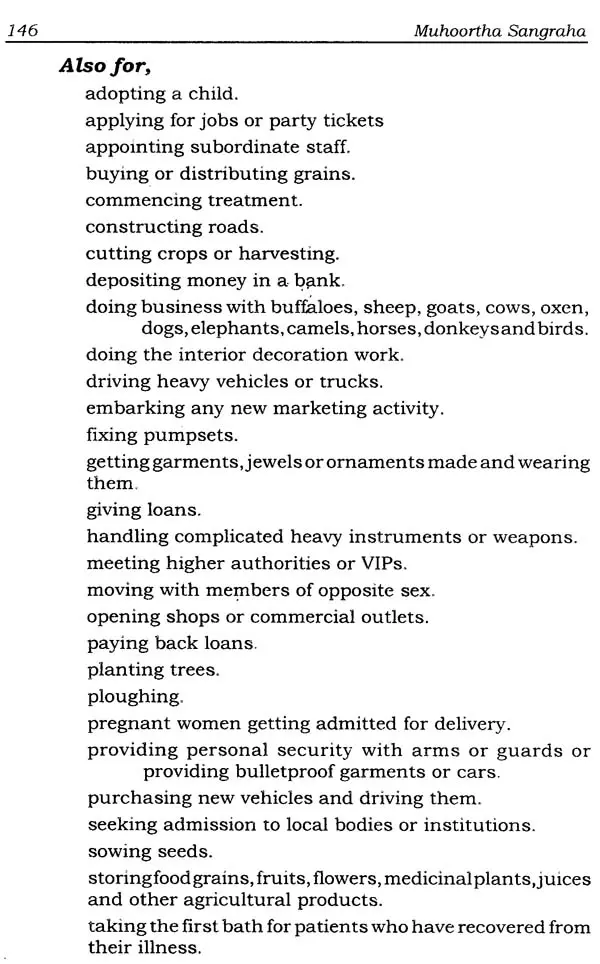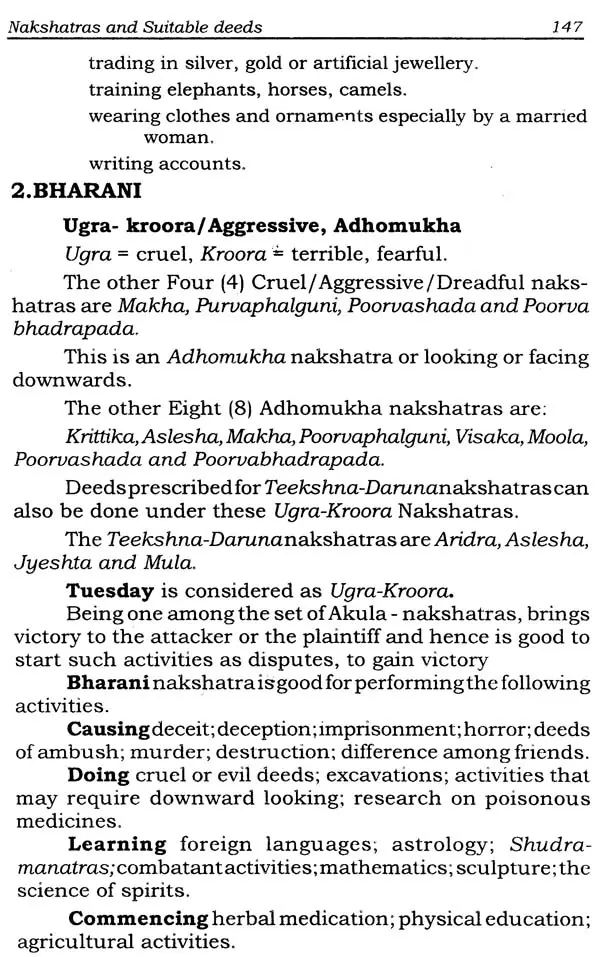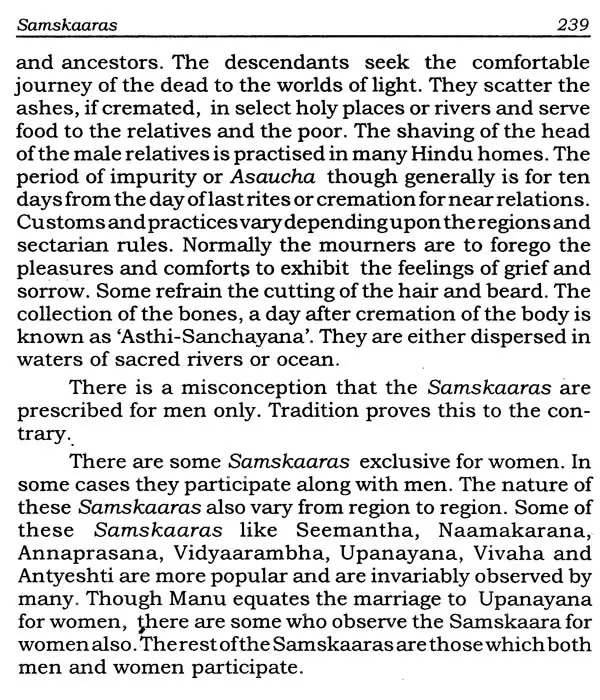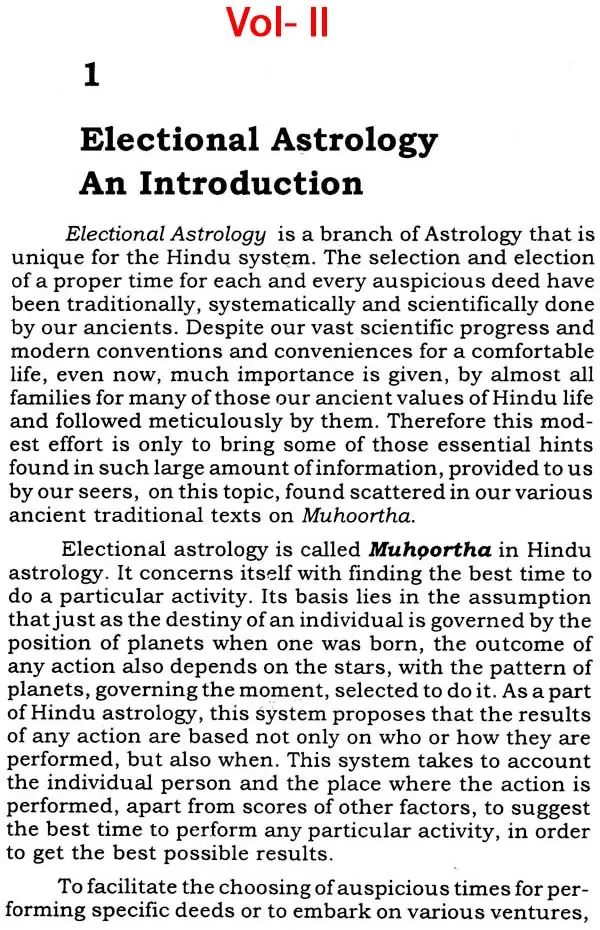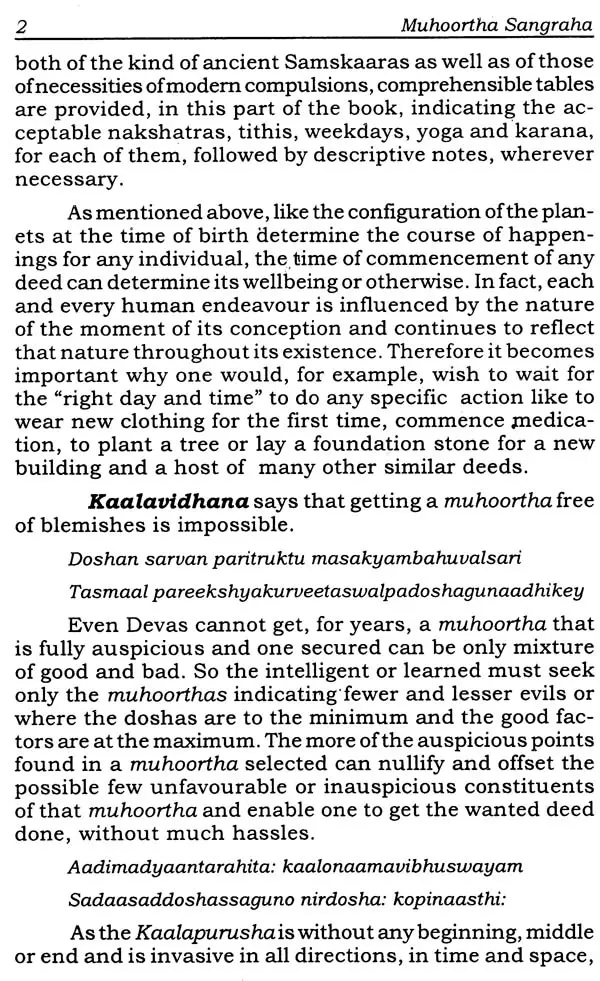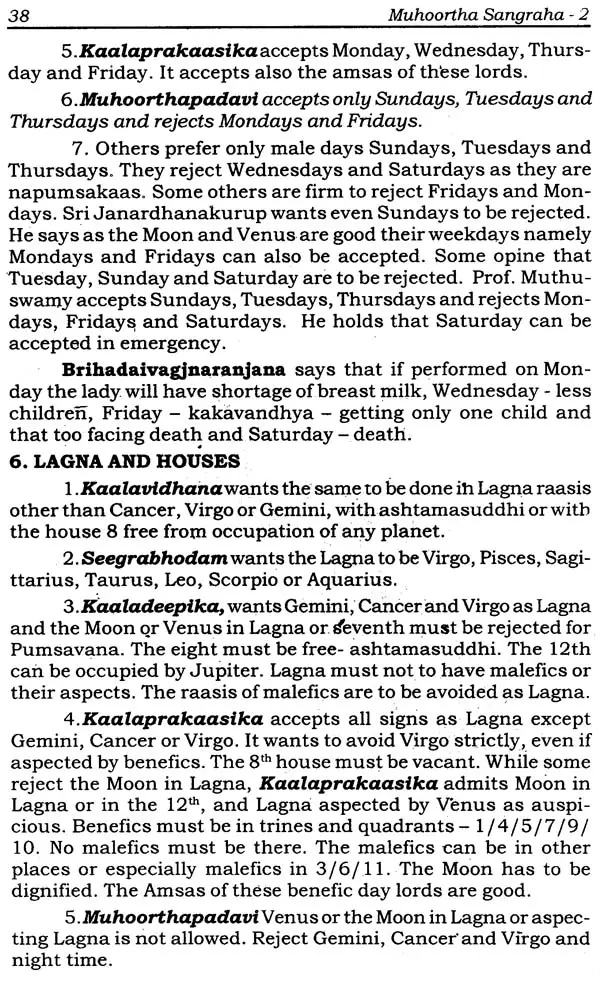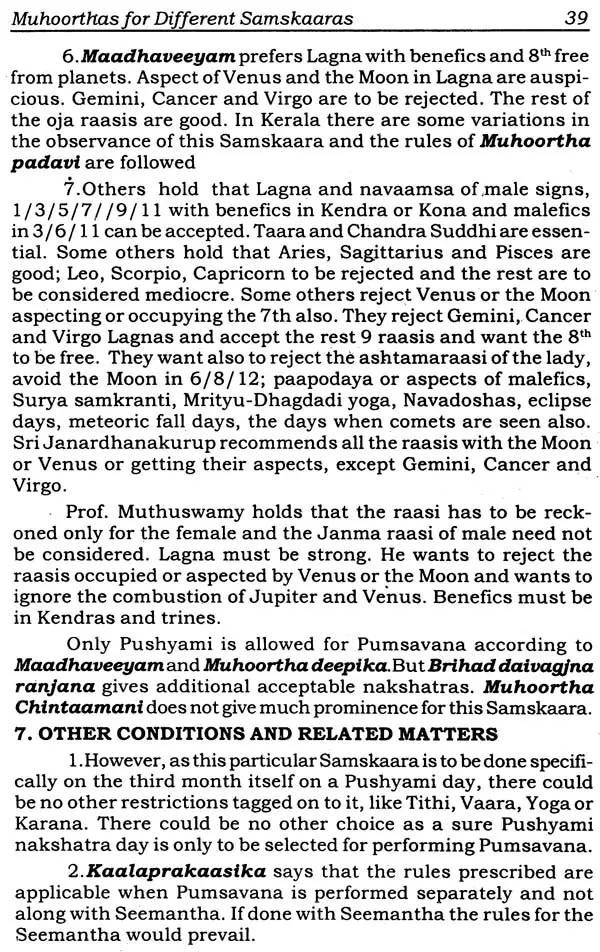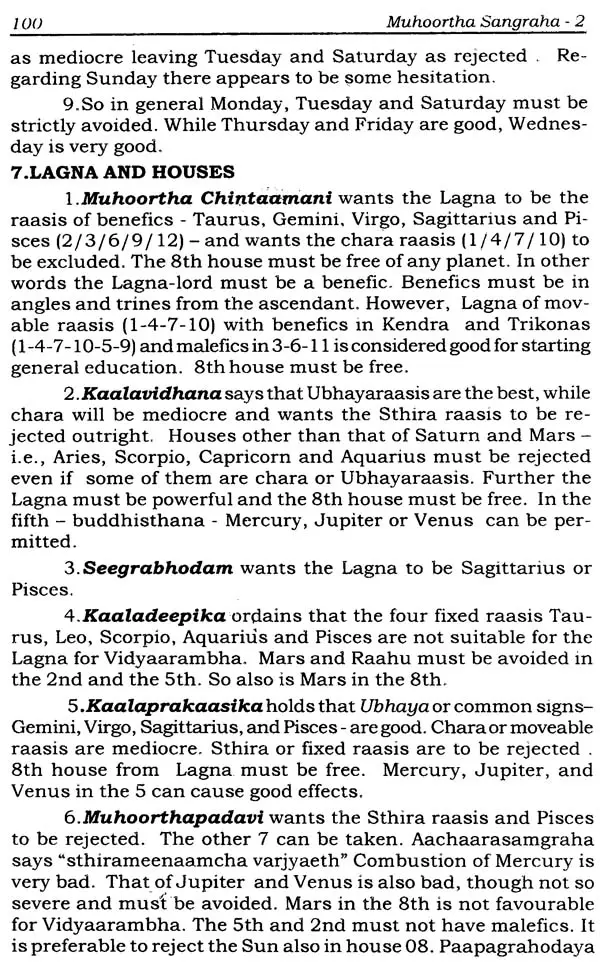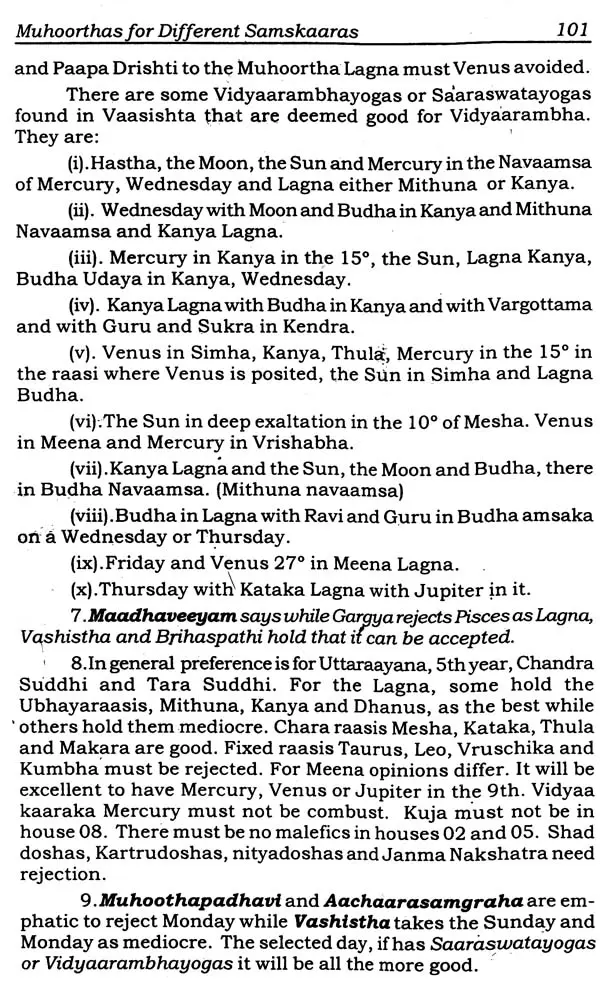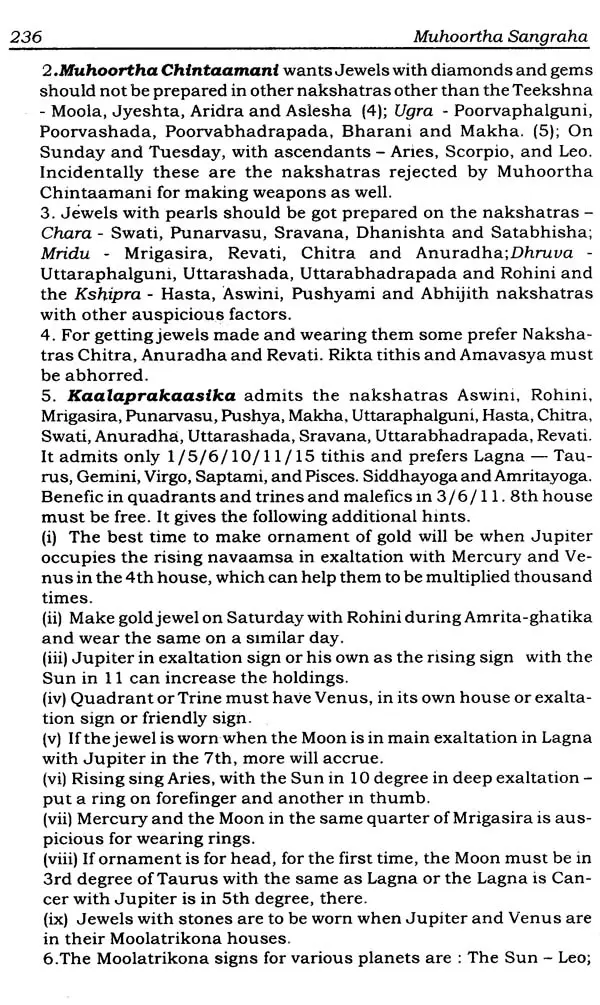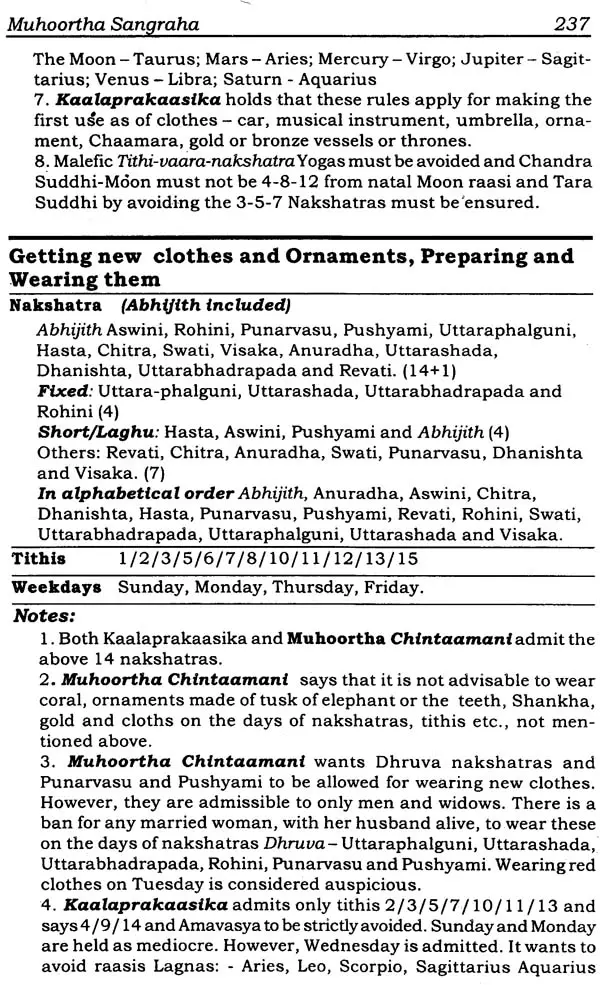
Muhoortha Sangraha- A Critical Study of the Muhoorthas in Indian Astrology (Set of 2 Volumes)
Book Specification
| Item Code: | UAH351 |
| Author: | V. S. Kalyanraman |
| Publisher: | CBH Publications |
| Language: | English |
| Edition: | 2011 |
| ISBN: | 8185381992 |
| Pages: | 516 |
| Cover: | PAPERBACK |
| Other Details | 8.50 X 5.50 inch |
| Weight | 470 gm |
Book Description
In the First volume, starting with the basic concepts of time, he delves into the history of time, and divisions of Time. The short history of calendar takes the reader to the different calendar systems prevalent during the years and takes the reader to the foundations of time and starts with the fundamentals of muhoortha and its character. The next chapter on Muhoortha dashas is excellent in content on muhoortha blemishes and how they can be remedied with simple selection of change of time. The chapter on Nakshatra and suitable deeds, contain muhoortha for deeds that are best suited to each Nakshatra. The deeds have been selected to suit the modern day requirements as well. The Samskaaras chapter delves deep into the history of various samkaaras as prescribed in different classics and its relevance to each samskaras. The chapter analyses each samskaras based on different classics like Muhoortha padavi, Madhaveeyam, Kalaprakasika, Kalavidhanam, etc.
In this book great effort has been made by Sri.V.S. Kalyanraman to elucidate the fundamental principles of arriving at a acceptable muhoortha. In fact this book is a comprehensive analysis of all the classics on Muhoortha.
In the Second volume, of the book, the pitfalls to be avoided for the selection of Muhoortha are presented. The next chapter delves in great detail, the Muhoorthas for different Samskaaras like, Garbhaadaana, Pumsavana, Seemantha, Jaatakarma, Naamakarana, Nishkramana, Annaprasana, Choodaakarma, Karna-vedha, Aksharaabhyaasa, Upanayana, Vedaarambha, Kesantha, Samavarthana and Vivaha. The next section comprises the bulk of the volume which contains muhoortha tables for different deeds based on the present day necessities. Divided into, separate sections like Educational, Farming and Agriculture, Business and Commerce, Building Activities, Legal Matters, Treatment and Medication, Undertaking Travel, Monetary Transactions, Occupational, Religious Rituals, Temple Activities and Miscellaneous etc.
In this book great effort has been made by Sri.V.S. Kalyanraman to elucidate the fundamental principles of arriving at a acceptable muhoortha. In fact this book is a comprehensive analysis of all the classics on Muhoortha.
The earliest way to assess the TIME was with reference to the alternation of natural light and natural darkness. The Sun, Moon, Planets and the stars helped a great deal, as one way or other, they helped the above mentioned alternations.
In India, the Vedic Heritage made even the temporal activities a spiritual exercise. From birth to death, every activity which constituted a milestone was identified as a "Samskaara" or a refining process. Naturally, to perform any such activity, the right TIME had to be chosen. Herein came, the concept of "Panchaang", which categorized one sunrise to next sunrise broadly under five heads. Tithi, Vaaram, Nakshatram, Yogam and Karanam, which characterized a given 24 hours, were determined with reference to Sun, Moon, Planets and Stars.
Apart from the Vedic tradition, even other leading faiths believe that the Primordial Energy (in whatever name it is called), is immanent and all-pervading, as it had transcended Time and Space.
This book comes very handy to a layman, to understand how a suitable time for each activity is selected. While Astronomy deals with the form-side of the celestial phenomena, Astrology, more an intuitive exercise, deals with the life-side of the celestial phenomena.
In the compilation of this work, though I have burnt a lot of midnight oil, in culling out information from various authoritative texts, cross-checking references and coordinating them to confirm critical concurrence to the current needs, I have been confronted with some conscious contradictions that could not be contained. While every effort has been ensured to present the available information in a manner easily comprehensible to the reader, in the midst of some controversial 'contentions, where some disputations were like Gordian knots, that could not be untied, I have cut them, for which liberty I have taken, I crave the leniency of the learned.
Our Vedic culture is extremely ancient. It has its own unique contributions to arts, science, literature, theology, philosophy and many other branches of knowledge. From times immemorial, the Vedas were considered as the guide books for a meaningful way of life. Even now, for most of us, it is so. As an integral part of the life of any Indian, it was astrology that helped our ancients to influence their day-to-day chores, from cradle to cremation ground. This is being practiced and followed seriously even today.
Indian Astrology is the study of the response of the man, to the more mystical planetary stimuli. Many believe, contrary to the actual truth, that the stars and planets have ostensible compassion or animosity to different persons. In fact they have no sympathy or enmity to anyone. They, by themselves are not there to help or harm anyone. Planets actually send forth radiations in the cosmos. However, they have some sort of cause-effect sense of balance, that influences the living organisms. This influence makes each human being adopt peculiar behavioral patterns, in thoughts, words and deeds. It must be remembered that our ancient seers, who were aware of this, formulated the science of Jyothisha after hundreds of years of observations and experiments.
Book's Contents and Sample Pages
